As the world becomes increasingly diverse and interconnected, organizations are recognizing the importance of inclusive leadership in creating a more equitable and inclusive workplace. In a recent interview with Gabby Zuniga, an expert in diversity, equity, and inclusion (DEI), we explored the concept of inclusive leadership and its significance in today’s business environment. Read ahead, and make sure to visit our podcast page for more insights on leadership and human resources!
The Definition of Inclusive Leadership
Inclusive leadership can be viewed from two perspectives. Firstly, it starts at the top of the organization, with the CEO, leadership team, and board taking a proactive approach to DEI work. This visible commitment and accountability set the tone for the entire organization and lays out responsibility for the rest of the organization to follow. Secondly, inclusive leadership is a set of behaviors and traits that anyone in the organization can adopt to create an inclusive workplace. It is about proactively working towards creating an environment where everyone feels valued and included, regardless of their position within the organization.
Key Traits of Inclusive Leaders
While there is limited academic literature on inclusive leadership, several traits and behaviors have been identified by organizations such as Deloitte and Catalyst. Our findings and theirs include:
- Visible commitment: Inclusive leaders make a visible commitment to diversity, equity, and inclusion, demonstrating their belief in these values and their willingness to learn and grow.
- Courage and vulnerability: Inclusive leadership requires courage to embark on a journey of learning and growth, as well as vulnerability to acknowledge and address one’s own biases and limitations.
- Awareness of bias: Inclusive leaders recognize their own biases and actively work to overcome them, fostering a more inclusive and equitable environment.
- Cultural intelligence: Inclusive leaders have the ability to understand and adapt to different cultural norms and perspectives, enabling them to create a more inclusive workplace for diverse employees.
No two leaders look the same, but an inclusive outlook will contain all four of these characteristics.
The Impact of the Virtual and Hybrid Work Environment
The shift to remote and hybrid work environments due to the COVID-19 pandemic has added new challenges to inclusive leadership. Communication, a crucial aspect of inclusion, has become more complex in virtual settings. Inclusive leaders must be mindful of their words, body language, and the cultural context of their interactions. Additionally, ensuring equity of opportunities and benefits for both in-person and remote employees has become a priority. Frontline managers play a crucial role in fostering inclusion and must be equipped with the necessary skills to navigate these challenges.
Despite being remote, online presences make us in some ways closer than ever. As Zuniga says, “We live in bubbles… recognizing that about ourselves is so important.”
Learn how to implement employee well-being into your total rewards with our free guide.
Debunking Myths About Inclusive Leadership
One common myth about leadership is that it is an innate quality that some individuals are born with. However, inclusive leadership is a skill that can be learned and developed. It requires effort, self-awareness, and a commitment to continuous growth. Leaders are not born; they are made through intentional learning and practice.
Is your organization employing any training to increase its DEI efficacy? Consider implementing training programs, bringing in consultants, or scaling your existing DEI strategies to meet new challenges.
Organizations Leading the Way in Inclusive Leadership
Many organizations have been working on diversity, equity, and inclusion for years and recognizing the long-term benefits of creating an inclusive workplace. Companies like Ernst & Young, TD Bank, and Manulife have made significant strides in embedding inclusive leadership into their organizational culture. These organizations have seen positive outcomes, including improved brand recognition, increased customer loyalty, and a more engaged and diverse workforce.
The benefits go beyond internal processes, however. Zuniga notes, “The benefits are huge—with brand recognition, customers, and people, everyone votes with their dollars, and [diverse companies] able to tap into different communities, different customer bases.”
Starting the Inclusive Leadership Journey
For organizations looking to embark on the inclusive leadership journey, it is essential to be proactive rather than reactive. Taking the time to assess the organization’s current state, identifying areas for improvement, and developing a roadmap is crucial. Investing in external expertise, such as hiring a DEI consultant, can provide valuable guidance and ensure a strategic and sustainable approach to inclusive leadership.
Resources for Developing Inclusive Leadership
Individuals interested in developing their inclusive leadership skills can start by reading “How to Be an Inclusive Leader” by Jennifer Brown. This accessible book provides practical insights and strategies for becoming a more inclusive leader. Additionally, Catalyst.org offers an Inclusive Leader quiz that helps individuals assess their inclusive leadership behaviors and provides tips for improvement. Additionally, our team at Scale HR is eager to consult you on possible resources to help improve your workplace outcomes.
Conclusion and Future Outlook
Inclusive leadership is a critical component of creating a more equitable and inclusive workplace. It requires a visible commitment from leadership, a willingness to learn and grow, and the ability to adapt to diverse perspectives and cultural norms. While the shift to virtual and hybrid work environments has added complexity to inclusive leadership, organizations can overcome these challenges by equipping frontline managers with the necessary skills and fostering open and inclusive communication.
As organizations continue to prioritize diversity, equity, and inclusion, inclusive leadership will play an increasingly vital role in driving positive change. By investing in inclusive leadership development and creating a culture of inclusion, organizations can reap the benefits of a diverse and engaged workforce, improved brand reputation, and increased customer loyalty. The journey towards inclusive leadership is ongoing, but the rewards are well worth the effort.
Want to learn more about inclusive leadership? Check out our other podcasts or schedule a call with our team today.









